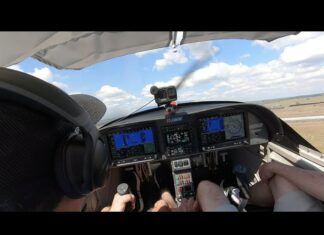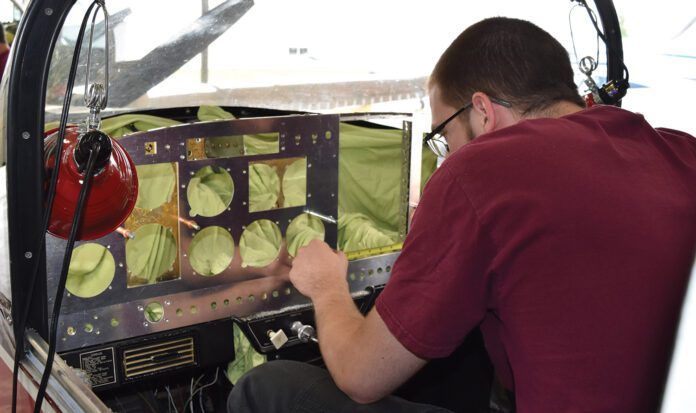
Based on years of surveys and our own experience, shops that keep customers happy are the ones that don’t overpromise, know how to communicate with their customers and don’t surprise them at the end of the job with big cost overruns. They also care for the aircraft as if it was their own. But there’s more to it than this.
At a time where long scheduling lead times, lengthy downtimes and complicated time-consuming interfaces are the norm, it’s more important than ever to choose a trusted shop and stick with it for the long term. Whether it’s routine wrenching, engine swaps, avionics upgrades or paint and interior projects, here’s a guide with things to consider when selecting a shop, plus tips for keeping the relationship on the rails along the way.
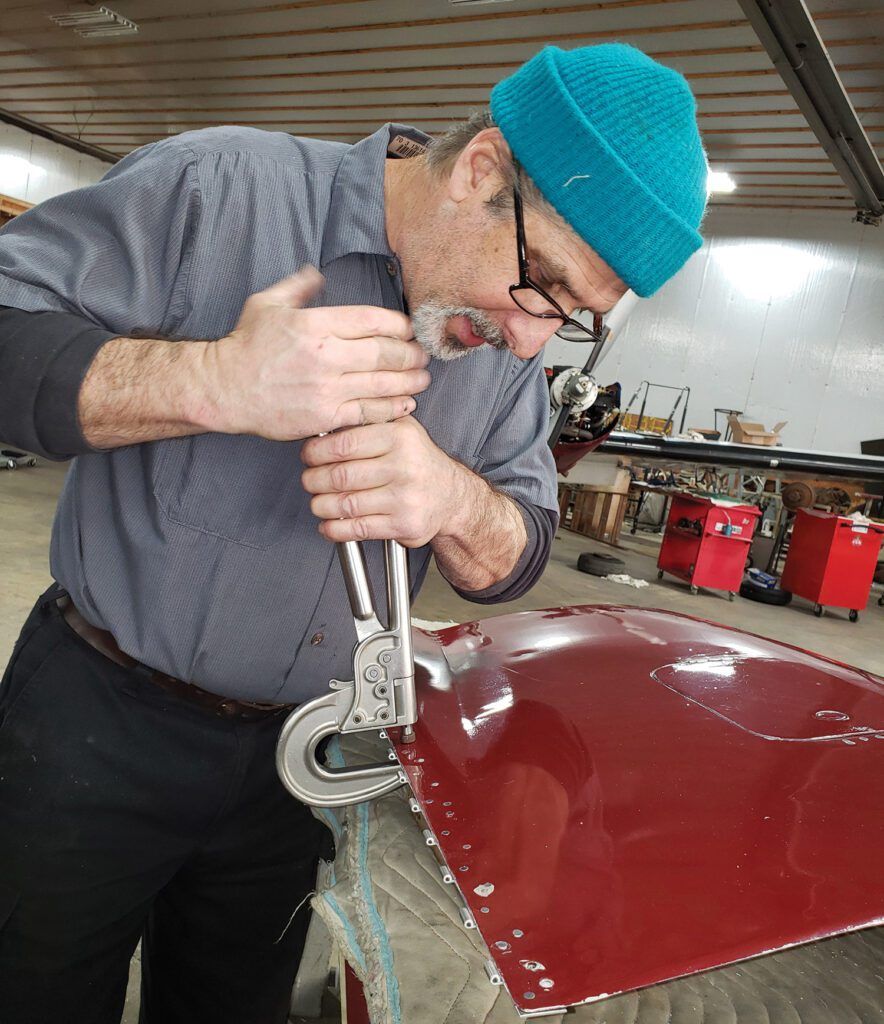
Talk it through
No matter if it’s avionics, engine or airframe maintenance, if you have a shop you’re happy with our advice is to stick with it—even if there are some warts—because like any relationship, there will be some issues to deal with. Maybe the shop handed you back the aircraft after an annual inspection or upgrade with some squawks or it was down longer than you expected—use the annoyance as an opportunity to hold the shop to a high standard.
In the busy day-to-day grind, shop managers tend to lose focus on the customer while they juggle countless distractions and tasks on the shop floor. Remember, a shop’s primary task is to deliver you an aircraft that’s airworthy and safe. If you’re agitated, speak up in a diplomatic way. This isn’t easy because it sparks conflict—especially when workload is high. Simply say that you value the relationship, respect their work and recommend the shop to others, but you aren’t happy with the way such and such was handled. Receptive shops learn from it.
Keep in mind that good technicians might not be good with people. While that’s not an excuse for neglecting the customer, you should choose a shop partly on the staff that’s in place to support you. Ideally, there’s a dedicated knowledgeable person (one not working on the aircraft) to coordinate scheduling and communicate with the customer. At smaller shops that isn’t always the case. Ask who you’ll be dealing with and for big projects, how often they will provide progress reports and updates. Shops need to understand that when a customer’s airplane is down for work, the owner is consumed with how it’s progressing and anticipating getting it back. Progress reports with photos (it’s so easy to do these days) help ease the separation anxiety.
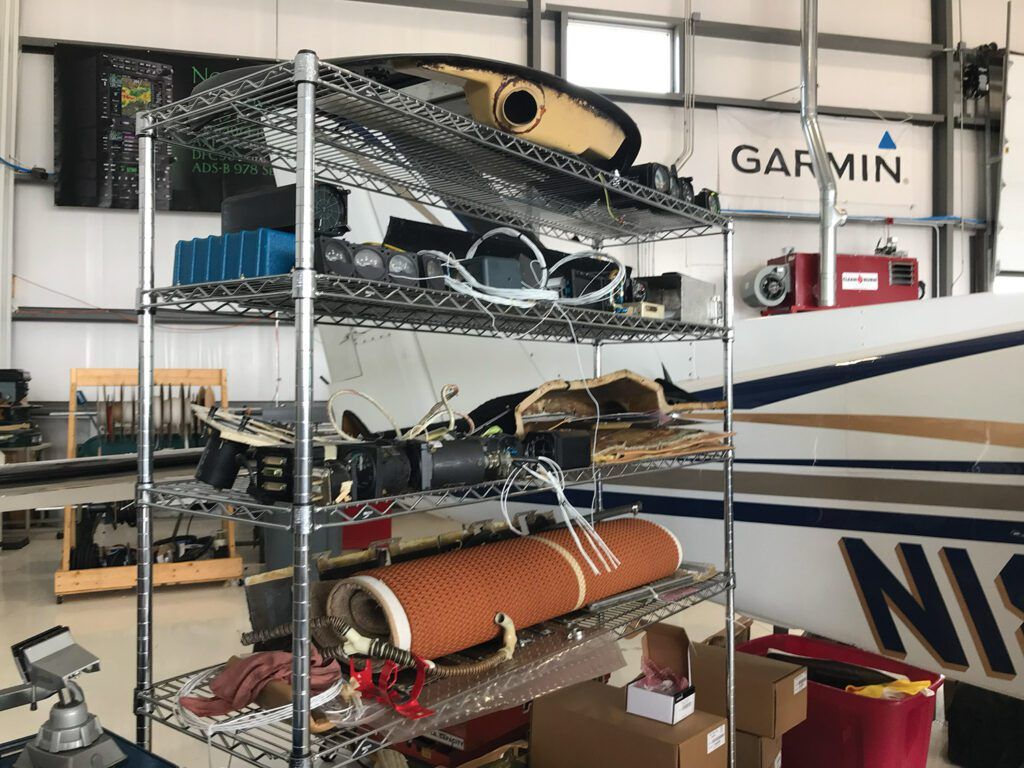
The visit
A shop visit is one of the most important things you should do when looking for one—whether it’s a one-time project or an ongoing maintenance relationship. Start by asking yourself if the shop is convenient enough for you to drive to when the aircraft is there. The shop might want you to come over to look at something, plus you might want to stay involved in the project by visiting. And since you’ll likely have to bring the aircraft back for tweaks, software updates, paint touch-ups and inspections, the shop’s proximity to your home base is important. Plus, if you plan to have a buddy help shuttle you back and forth for drop-off and pickup chores, do you really want to ask them to fly hundreds of miles to do so? While we know folks who fly the airlines to and from the shop (good mechanics may be worth the expense and effort), the logistics may not be worth it.
Does the shop’s facility have adequate tie-down space? We recall giving a friend a lift to check on his plane while it was down for an avionics upgrade. When we taxied to the shop on a gusty winter day, we found the airplane (a light single) on the ramp untied and unchocked. Worse, the project required new antennas to be installed on top of the cabin. The shop had removed the old antennas and didn’t cover the holes before parking the airplane out in the weather.
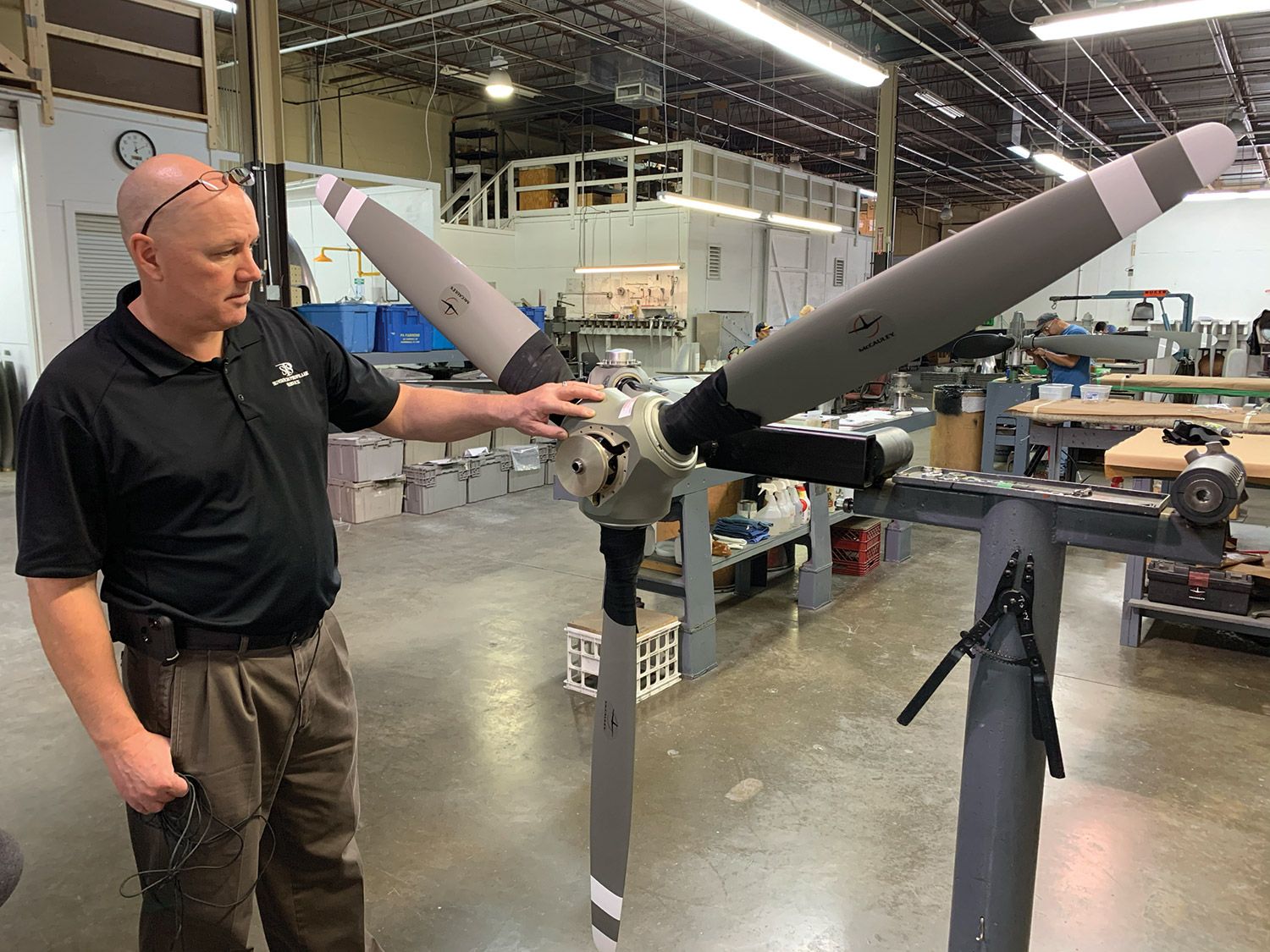
After questioning the shop, he was told they were waiting on parts and simply didn’t have enough space to store all of the planes it had. Don’t assume your bird will live in the hangar during its entire visit with the shop. Bring a cabin cover, inlet plugs and control locks and ask the shop to please use them should they park it outside. It wouldn’t hurt to bring a set of ropes, too.
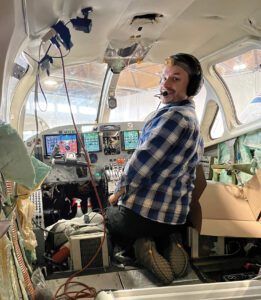
On a similar topic, ask if the shop has its own line staff to move the airplanes or if it relies on the FBO (many shops simply lease hangar space and line services) to do the moving. Regardless of who moves it, if you have an uncommon model, ask the FBO if it has the proper tow bar for it. We’ve seen all kinds of towing-related prangs—everything from hangar rash to wheel pant blemishes—plus nosegear damage because the tow limits were exceeded. Does the shop have hangar-keepers insurance? It’s bad enough when your aircraft gets damaged during maintenance, but worse when there’s a dispute between the shop and the FBO as to who is at fault and who will pay for the repairs.
During your initial visit, ask how many like aircraft the shop has worked on. This really isn’t a factor with the typical plain-vanilla Piper or Cessna single. But depending on the work, composite and fabric aircraft experience is a factor especially if the job includes antenna work.
If you’re looking to build a general maintenance relationship (for annual inspections, routine and advanced airframe repairs and major mods), certainly ask how familiar the shop is with the model and how many it has worked on. Moreover, does it have a current set of maintenance manuals for it?
We’ve heard plenty of stories where modern autopilot retrofits went wrong because the avionics shop didn’t have the tech data to properly rig the flight controls. One customer who had a new Garmin GFC autopilot installed ended up flying hundreds of miles away simply to have a different shop (who had the manuals and the experience) properly rig the aircraft so the autopilot flew it true. The installing shop was even an approved Garmin dealer/service center.
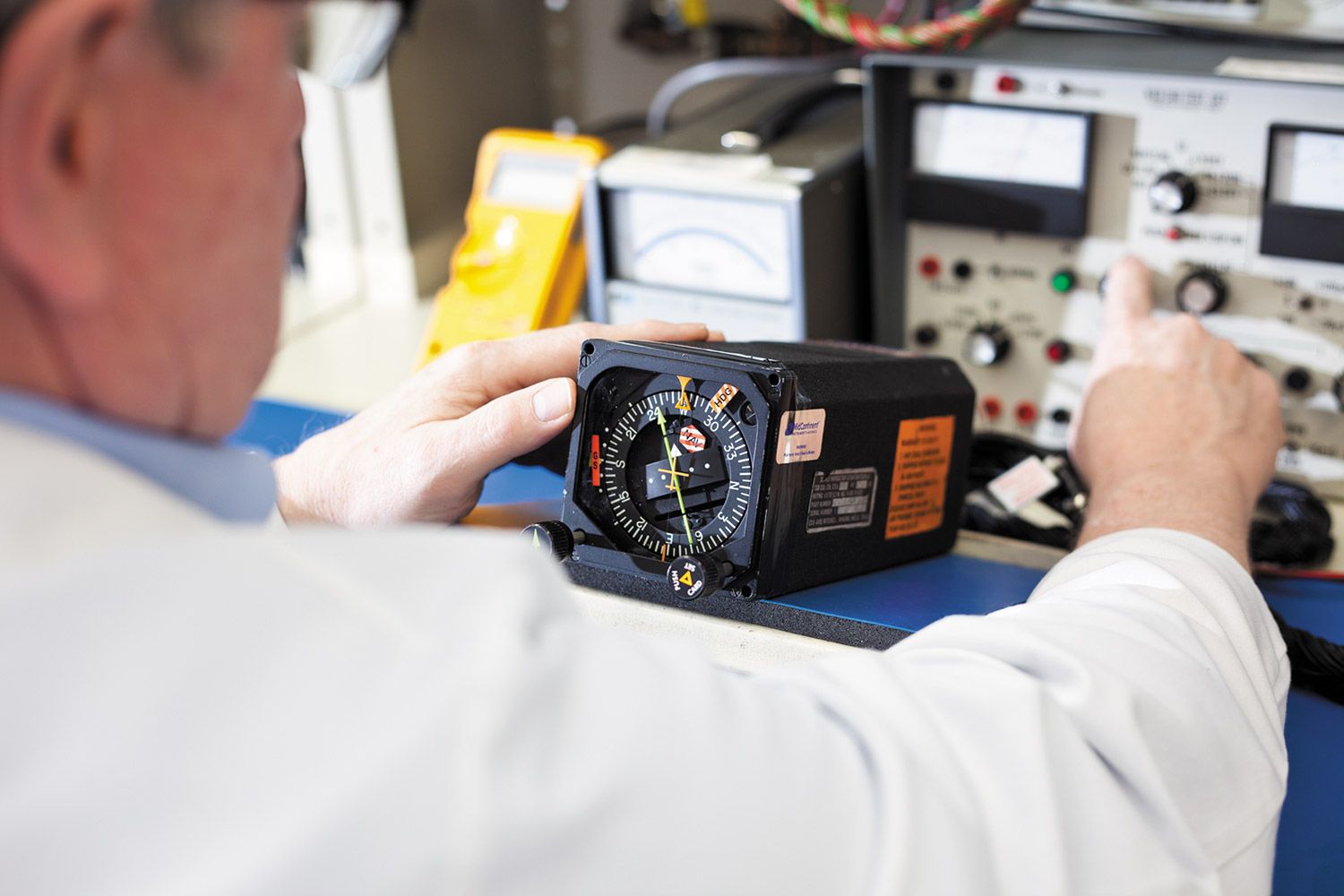
When you visit, bring the airplane so the shop can put its eyes on it—especially for big projects. It’s the only way to get an accurate proposal. In our view, major work should never be accomplished without a written price quotation. Don’t confuse a job proposal with a price quotation. Some proposals are an outline of the job, but might not be a firm price quotation. Are there hidden costs, including freight charges to order equipment? Freight charges can add hundreds of dollars to a project. But don’t expect that to always be the final price. There could be other variables that the shop won’t see until it disassembles the panel or engine or opens the airframe. Still, good shops might build that variable into the quote. Major projects can snowball once the job gets started. While this generally isn’t the fault of the shop, it still has to get your approval for cost overruns. But the way we see it, a simple call or email is all takes to keep you informed. In our estimation, you aren’t obligated to pay for work you didn’t approve.
Last, ask for a tour of the shop. Is it clean and orderly? Observe some jobs in progress and how the techs work. Do you see tools placed on seats and on wings and cowlings without protection? If the shop has test benches, is the work area organized, clean and are there calibration stickers on the test equipment? Ask if the shop is an FAA Repair Station, and whether the work will be signed off by A&P and IAs. Is there a DER on staff for engineering approvals above and beyond the scope of STCs? Part 145 Repair Stations generally have detailed written quality control procedures in place and the FAA keeps close tabs on it. Ask what dealerships the shop maintains.
Last, ask the shop for a few references of customers who had similar work accomplished—preferably on similar aircraft as yours. Sure, shops won’t put you in touch with folks who have horror stories to tell, but there’s a good chance you’ll hear about the good and maybe not so good things about the shop. No shop is perfect and no shop keeps every customer happy.
But if there’s a pattern of bad experiences, that word will travel quickly. If you’re unfamiliar with a shop, ask how long it’s been in operation and equally as important, how long the shop has been operating under the current management. We’ve seen plenty of shops that once had stellar reputations, but made a turn for the very worst when the shop was sold to another party. And remember, a shop is only as good as the technicians who pump out the work. The shops with few staff turnovers are generally the ones with the best reputation.
Is it done yet?
Once you commit to the project (you did get at least three comparable proposals, didn’t you?) you have some important responsibilities. This includes abiding by the stated payment terms. It can be an uncomfortable part of the relationship and it’s often one that gets fumbled—badly.
That proposal or price quote you got (in writing, after inspection of the aircraft) should have clearly stated payment terms. For major avionics, engine, interior and paint work, that generally includes what the shop expects for a deposit. This can vary widely among shops, and of course it depends on the project. Using an avionics retrofit as an easy example, if the shop requires one-third of the project’s price to be paid when dropping off the airplane (or to secure a spot on the shop’s schedule), it means the shop absolutely expects you to pay the deposit on time.
One sure way to get sideways with a shop is not paying the invoice when it delivers the goods. Sure, you might develop a close working relationship (or what you think is a close relationship) with the shop’s manager, but good managers stand firm and straight when it comes to invoicing, and shop owners will attest they aren’t in the business of lending money. Especially at smaller shops, cash flow is always a concern, made worse when customers leave without paying. Think about the number of retail businesses that will allow you to leave with a product or service without paying on the spot. “Try going to a car dealership and leaving without paying your bill. It just doesn’t happen, yet in aviation there seems to be an assumption among some aircraft owners that it’s acceptable to send payment after leaving with the aircraft (unless the shop agrees),” one shop owner told us. Work out the money matters we’ll ahead of time and do your part. But it can still turn sour, as we explain in the sidebar above. Know your (and the shop’s) rights.
Do the shop a favor and clean out the aircraft before dropping it off. This includes headsets (they can disappear during some maintenance stays), portable ADS-B receivers, step- ladders and relief bottles. Shops don’t have the time, space or responsibility to look after these items and you shouldn’t expect them to store them. Keep tight control of logbooks.
Walk around the aircraft with someone from the shop and make note of any flaws in the paint, the glass and interior components. This way there’s no question about new or old damage when you pick the airplane up. And be sure to tell the shop about any problems you’re having with the engine or systems—even if it’s something they’ll be replacing—and ask them to document it in the job paperwork. This can avoid unnecessary troubleshooting when the job is finished. As one example, a customer brought his airplane to the shop for a new strobe light system because the old system was intermittent. It wasn’t properly communicated that there was a problem and the newly installed strobe lights had the same intermittent problem because of a faulty connector (which the shop reused for the new system).
Keep it real
Maintain a good working relationship with your shop and you might have an easier time getting priority scheduling for unexpected repairs. The current workload and long scheduling times at the better shops mean you should consider scheduling planned maintenance long in advance. Avionics, paint and interior mods are often backlogged close to a year. Engine swaps could take nearly as long.
For smaller jobs, ask the shop exactly where you fit in its schedule and how long aircraft might sit before the work commences. Is it filler work or will it be a priority? Understand that the job isn’t done until the aircraft is test flown and normal tweaks are made. That means not scheduling important trips around maintenance events.
Last, pick a shop that has the manpower to service the customer with good communication. The ones with happy clients are the ones who nail that and more.
The lever that a shop has to enforce payment is to place a lien (often called a mechanic’s or artisan’s lien) on the aircraft on which the work was performed. The procedure for asserting and “perfecting” (making enforceable) a lien is almost always established by the law of the state where the shop is located. There are a few states that do not have aircraft mechanic lien laws.
Yes, of course, there’s more: Once a lien is filed under state law (or sought in a state with no law), the lien must be recorded in the FAA aircraft registry—the place you filed your aircraft registration when you bought it. The FAA registry is designed as a one-stop shopping location for a prospective buyer to search for any “clouds,” such as liens, on an aircraft title. (The FAA does not enforce liens; it just records them.) As only a complete dolt would buy an airplane with a recorded lien against it, a shop often is able to collect on its bill when the owner seeks to sell the airplane and has to pay off and release any liens to be able to sell the aircraft with a clear title.
And, yes, what we’re putting down here is only an introduction to aircraft liens, so it’s simplified. If you are in the position of needing to assert a lien or fight one, step one is to retain an aviation attorney who understands them. AOPA’s Legal Services program (www.pilot-protection-services.aopa.org) is a good place to start your search.
Of course there’s more to lien law. Under your state law your lien may have a limited life, so it may be necessary to foreclose on the aircraft and have it sold at a sheriff’s sale before it expires. As an aircraft owner, you may have defenses to a lien under state law and may be able to get it removed.
A big kicker to aircraft liens is that most states require that they be “possessory” to be effective—that means that the shop must continuously have the aircraft in its possession after the work is done. The shop can’t let the aircraft go, find out it isn’t getting paid and then go get it and lock it up.
For shops, the basic way to ensure payment is to do as your local car dealership does—require that the owner pay at the time of service to get the aircraft. Oh, and don’t do as some shops have tried—lock up the aircraft logbooks and refuse to turn them over until getting paid. That’s potentially criminal and could subject the shop to some ugliness in court.
Finally, in our opinion, the best way for both owners and shops to avoid the potential for a lien is for the owner and shop to agree up front that the owner has to approve, in writing (text is OK), all work before it is performed. Further, the shop must provide an estimate for all work for the owner to approve before the work starts. If, when the shop gets into the aircraft, something is found that means the work can’t be done for the estimated cost, such as hidden corrosion, all work stops until the owner is advised, a new estimate prepared and the owner approves. When the work is done, the owner is presented with a bill that closely matches the estimate (so there are no surprises) and the owner pays for the work upon picking up the airplane. It’s the way good shops operate because they know that while it takes a little more time, it prevents surprised owners who balk at paying bills and the need for shops to pursue liens against their customers’ aircraft.
—Rick Durden

